Before the printing press made books cheap and easily available, books in the Middle Ages were incredibly scarce and precious. Without a method to mass produce, each book had to carefully copied by hand that took thousands of hours of skilled work. During the later middle ages, when publicly accessible libraries came into being, books were often chained to the shelves allowing the public to read, while at the same time safe-guarding the library’s valuable collection from potential thieves.
The chains were fitted to the corner or cover of the books via ringlets, and were long enough to allow the books to be taken from their shelves and read, but not removed from the library itself. Only the librarian could remove the books from the chain using a key. The books were typically shelved with their foredges facing the reader, rather than their spines. This may seem like the wrong way, but it did allow the books to be lifted down and opened without needing to be turned around, thus avoiding tangling the chain.

With the introduction of the printing press, duplicates became more readily available and the value of books dropped significantly. By the late 1800s, the practice of chaining books to the shelves died out. Today only a handful of chained libraries exist, solely for the sake of preservation.
Hereford Cathedral Library
The Hereford Cathedral Library in Hereford, England, is the largest surviving chained library with its chains, rods and locks intact. Established in 1611, the library contains mainly old books in manuscript chained to their places, some of them fine specimens of ancient handwriting, containing beautiful illustrations in gold and colour. Two of the most valuable are a unique copy of the ancient Hereford antiphonary of the 13th century, in good preservation, and the Hereford Gospels, a copy of the Gospels in Anglo-Saxon characters, dating to around the year 780. The Hereford Gospels is the oldest volume in the library. Aside from the Hereford Gospels, is the Wycliffite Bible and the 13th century Hereford Breviary – the only surviving copy.
From our partners:
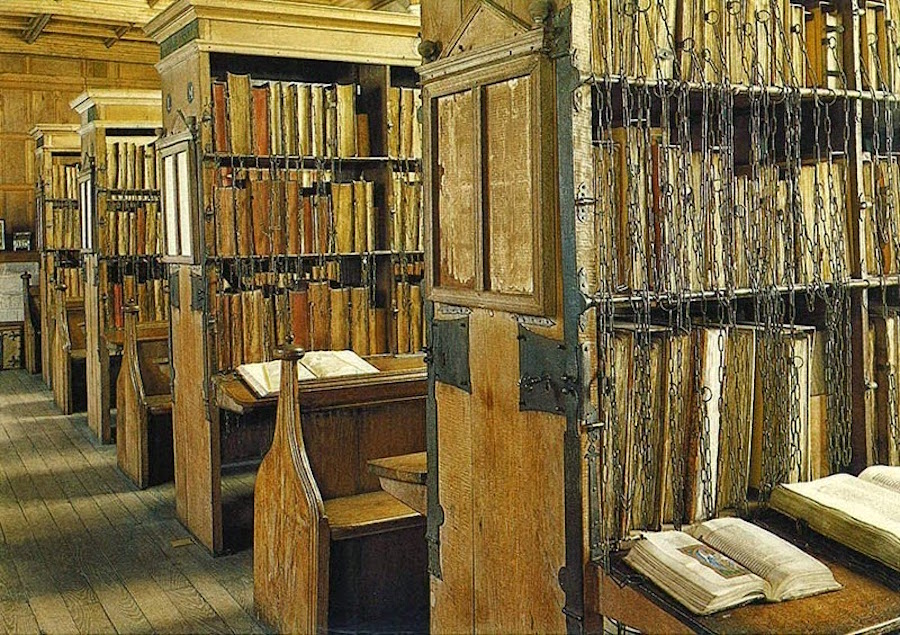
Another treasure is an ancient reliquary of oak, bequeathed to the cathedral by Canon Russell, who is said to have obtained it from a Roman Catholic family in whose possession it had long been. It is covered with copper plates overlaid with Limoges enamel representing the murder and entombment of St. Thomas of Canterbury.


The Chained Library (“Librije”) of Zutphen
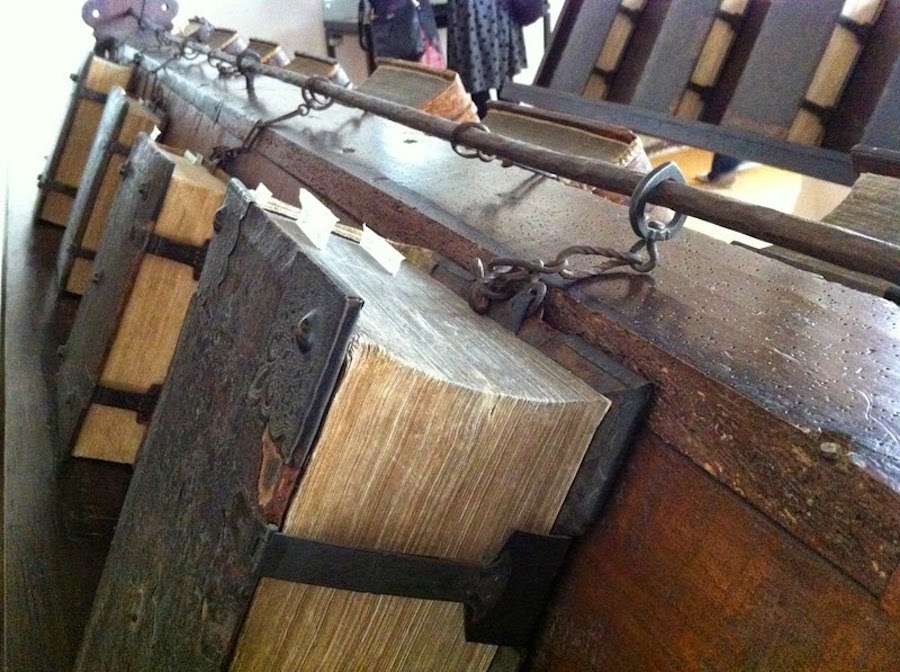
The “Librije” is housed in St. Walburgis church in the town of Zutphen in the province of Gelderland in the Netherlands. The Church dates from the 11th century but the library was created only in the 16th century. The building and the interior of the library have remained almost unchanged throughout the ages. The old books are still chained to their ancient wooden desk.
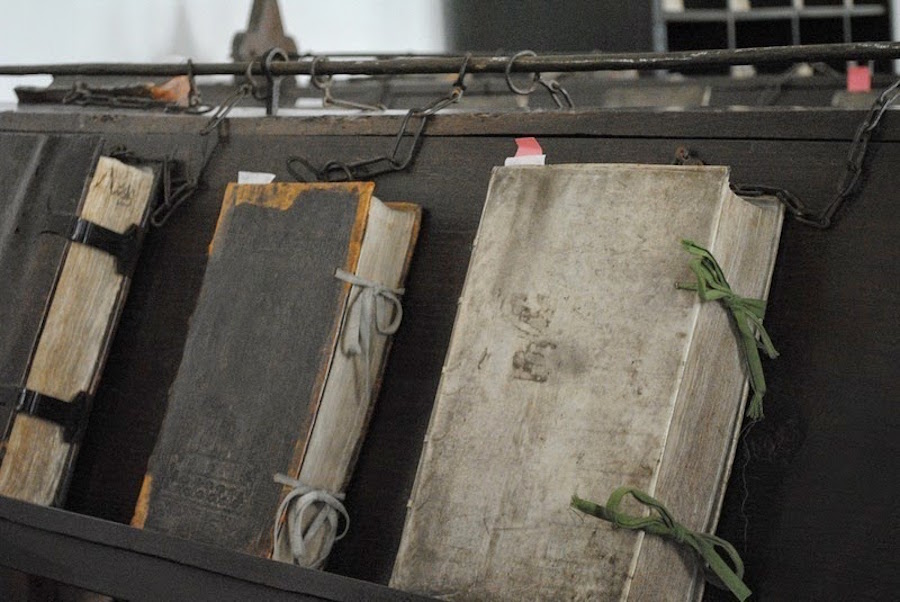

Francis Trigge Chained Library

The Francis Trigge Chained Library in Grantham, in England, was founded in 1598 and was the first public reference library in England. The library has 356 separate items catalogued, of which some 80 still have their chains intact. These attachments, however, are modern and date from the restoration of the decaying porch room in 1884. The library has several rare collections that were printed before the 1500s.
Royal Grammar School Chained Library
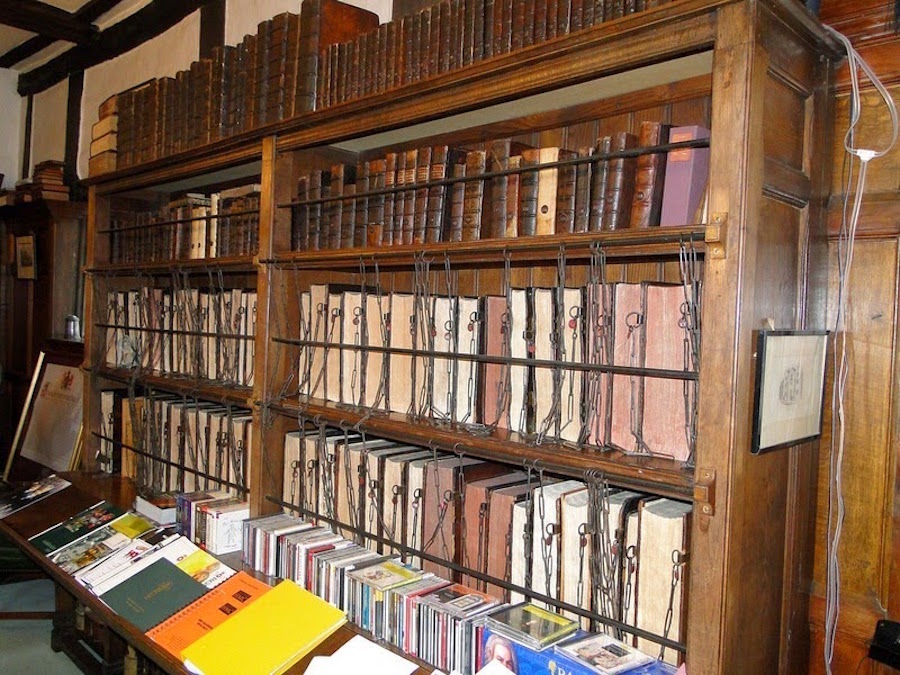
The chained library at Royal Grammar School in Guildford, England, is housed within the Gallery (now the Headmaster’s Study) in the Old Building, with the present bookcases dating from 1897. The library itself was founded near the end of the 16th century. From then till 1800, many notable collections were added to the library. The oldest book within the library was printed in Venice around 1480, with the oldest English book printed in about 1500 bearing the imprint of Wynkyn de Worde. Today the library is one of the few remaining examples of a chained library located within a school.
Wimborne Minster Chained Library
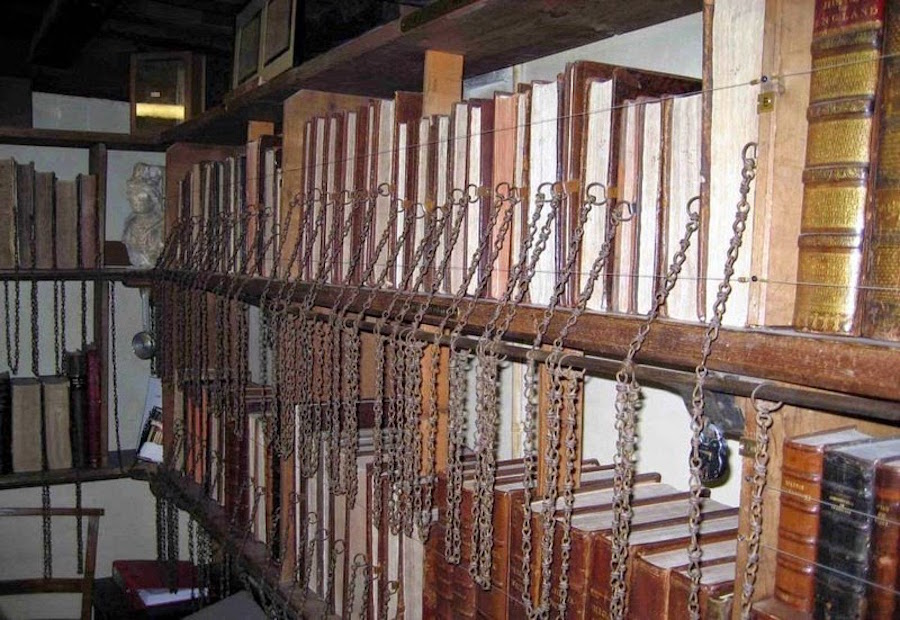
The chained library at Wimborne Minster in England is the second largest chained library. It was founded in 1686. The library has about 150 books all in chains.
Biblioteca Malatestiana

The Biblioteca Malatestiana, opened in 1454, is located in Cesena, in Italy, in a former Franciscan monastery. The library still has books chained to the sloping desk with iron-wrought chains.
Wells Cathedral Chained Library
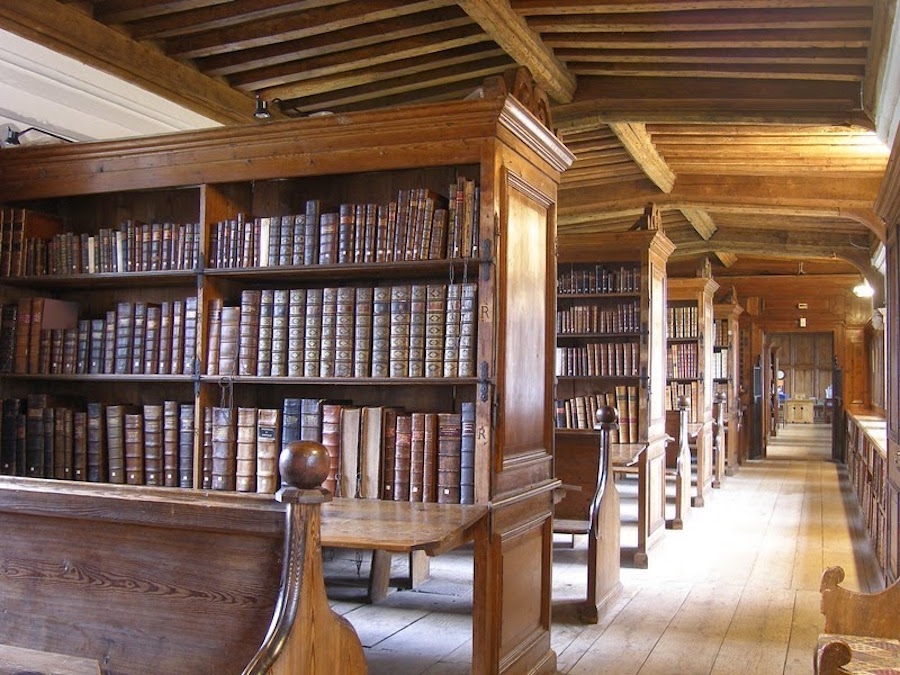
The Chained Library at Wells Cathedral, in Wells, England, houses books published before 1800. The library has some 2,800 volumes in subjects ranging from theology and history, to science and medicine, to exploration and languages. The earliest book in the collection is a Pliny Naturalis Historiae printed in Venice in 1472. Other early books include Vesalius’ De Humanis Corporis Fabrica of 1555, which is the book of anatomy that heralded the advent of biology as a subject, and the earliest complete atlas of the world by Abraham Ortelius which was first published in English in 1606.
This feature originally appeared in Amusing Planet.
















